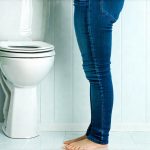Experiencing odd pain in the lower abdomen after urination can be unsettling, prompting worry and a search for understanding. It’s a symptom that doesn’t necessarily signal a serious problem but always warrants attention to determine its cause and whether further evaluation is needed. Many factors can contribute to this discomfort, ranging from relatively benign issues like muscle strain or dehydration to more complex conditions requiring medical intervention. The location of the pain – left side, right side, center – and its specific characteristics (sharp, dull, cramping) are crucial clues in narrowing down potential causes. This article aims to explore a range of possibilities, providing informative context without offering diagnostic conclusions; it’s meant to empower you with knowledge so you can better understand your body and communicate effectively with healthcare professionals.
It’s important to remember that self-diagnosis can be misleading, and this information should not replace professional medical advice. The human body is complex, and what feels like a simple issue could potentially be linked to underlying conditions. While some instances of post-urination pain resolve on their own or with basic lifestyle adjustments, persistent or severe discomfort necessitates prompt evaluation by a doctor. Understanding the potential causes allows you to approach the situation with informed awareness, preparing for a productive conversation with your healthcare provider and facilitating a more accurate diagnosis.
Common Causes of Lower Abdominal Pain After Urinating
One of the most frequent culprits behind lower abdominal pain following urination is related to the urinary tract itself. Infections are high on that list – urinary tract infections (UTIs), in particular. These occur when bacteria enter the urethra and travel to the bladder or kidneys. UTIs often present with a burning sensation during urination, increased frequency of needing to urinate, cloudy urine, and sometimes blood in the urine. The pain after peeing is often linked to inflammation caused by the infection. Beyond infections, issues like kidney stones, even if small, can cause intense pain that radiates to the lower abdomen after urination as they move through the urinary tract. Dehydration also plays a role; insufficient fluid intake concentrates urine, potentially irritating the bladder and causing discomfort.
Another significant factor is muscle strain or tension in the abdominal wall. While seemingly unrelated to urination, the act of peeing involves muscles in the pelvic region that can be stressed, especially if someone has been physically active or engaged in strenuous exercise. This type of pain is typically less severe than UTI-related pain and often improves with rest. Finally, conditions like interstitial cystitis (IC), also known as painful bladder syndrome, can cause chronic lower abdominal pain, including discomfort after urination. IC involves inflammation of the bladder walls, leading to frequent urgency and a persistent feeling of pressure or pain.
It’s important to differentiate between acute, sudden-onset pain and chronic, long-lasting pain. Acute pain often signals an immediate problem like a UTI or kidney stone, while chronic pain suggests a more ongoing issue requiring further investigation. The nature of the pain – sharp, dull, cramping, burning – also provides valuable information for healthcare providers. Don’t hesitate to describe your pain as precisely as possible when consulting a doctor.
Exploring Potential Gynecological Causes
For individuals with female reproductive organs, gynecological conditions can frequently mimic urinary symptoms and contribute to lower abdominal pain after urination. Endometriosis, where tissue similar to the lining of the uterus grows outside the uterus, can affect the bladder or surrounding structures, causing pelvic pain that intensifies during or after urination. Similarly, ovarian cysts, depending on their size and location, may press against the bladder, leading to discomfort. Pelvic inflammatory disease (PID), an infection of the reproductive organs, also manifests with lower abdominal pain and urinary symptoms.
Another consideration is the potential for uterine fibroids, non-cancerous growths in the uterus, which can exert pressure on the bladder or urethra. This pressure can lead to frequent urination, urgency, and discomfort after peeing. It’s important to remember that these conditions aren’t always directly linked to urination but can present with overlapping symptoms, making accurate diagnosis crucial. Seeking a gynecological evaluation alongside a general medical assessment is often recommended if you suspect a reproductive cause.
Finally, it’s worth noting the impact of hormonal changes throughout the menstrual cycle and during pregnancy. Hormonal fluctuations can affect bladder function and sensitivity, potentially contributing to temporary discomfort or increased frequency of urination. Pregnancy itself places significant pressure on the bladder, leading to urinary symptoms that may be mistaken for other conditions. Regular gynecological check-ups are essential for maintaining reproductive health and identifying potential issues early.
The Role of Bowel Health & Related Conditions
The close proximity of the bowel to the bladder means that intestinal problems can often manifest as lower abdominal pain seemingly related to urination. Constipation, for example, can put pressure on surrounding organs, including the bladder, causing discomfort or a feeling of fullness even after voiding. Irritable bowel syndrome (IBS) is another potential contributor; its symptoms – bloating, gas, abdominal cramping – can sometimes be mistaken for urinary issues.
Furthermore, inflammatory bowel diseases (IBD), such as Crohn’s disease and ulcerative colitis, are known to cause chronic inflammation in the digestive tract that can extend to the pelvic region. This inflammation may irritate nearby structures like the bladder or urethra, leading to post-urination pain. Diverticulitis, an infection of small pouches that can form in the colon, also presents with lower abdominal pain and urinary symptoms due to its location.
It’s crucial to consider bowel health when evaluating lower abdominal pain, especially if it’s accompanied by changes in bowel habits or other digestive issues. A thorough medical history, including questions about bowel movements, diet, and any previous gastrointestinal diagnoses, is essential for accurate assessment. Ignoring bowel-related symptoms can lead to delayed diagnosis and potentially worsen the condition.
When To Seek Medical Attention Immediately
While many causes of post-urination pain are relatively benign, certain red flags warrant immediate medical attention. Severe, sudden-onset pain, particularly if accompanied by fever, chills, nausea, or vomiting, could indicate a kidney infection (pyelonephritis) or a severe urinary tract infection requiring prompt antibiotic treatment. Blood in the urine (hematuria) is another concerning sign that necessitates evaluation to rule out serious conditions like bladder cancer or kidney stones.
Difficulty urinating – either inability to pee at all or a weak stream – can signal a blockage in the urinary tract, potentially caused by an enlarged prostate (in men), urethral stricture, or other obstruction. Pain radiating from the flank (side of the back) towards the groin is often indicative of kidney stones and requires urgent medical intervention. Finally, if you experience persistent pain that doesn’t improve with over-the-counter remedies or lifestyle adjustments, it’s essential to consult a healthcare professional for a proper diagnosis and treatment plan. Ignoring these warning signs can lead to complications and potentially long-term health problems.
Disclaimer: This article provides general information and should not be considered medical advice. Always consult with a qualified healthcare professional for any health concerns or before making any decisions related to your health or treatment.





















